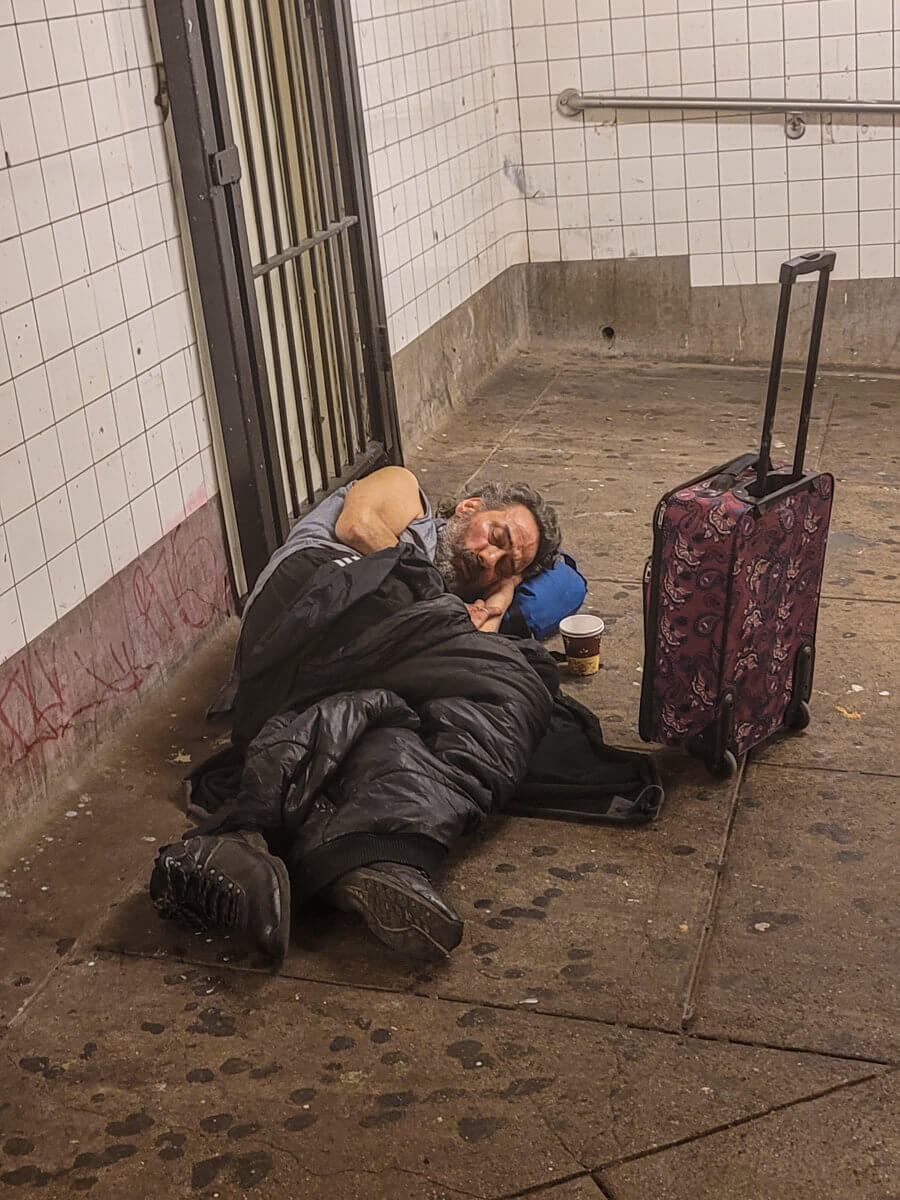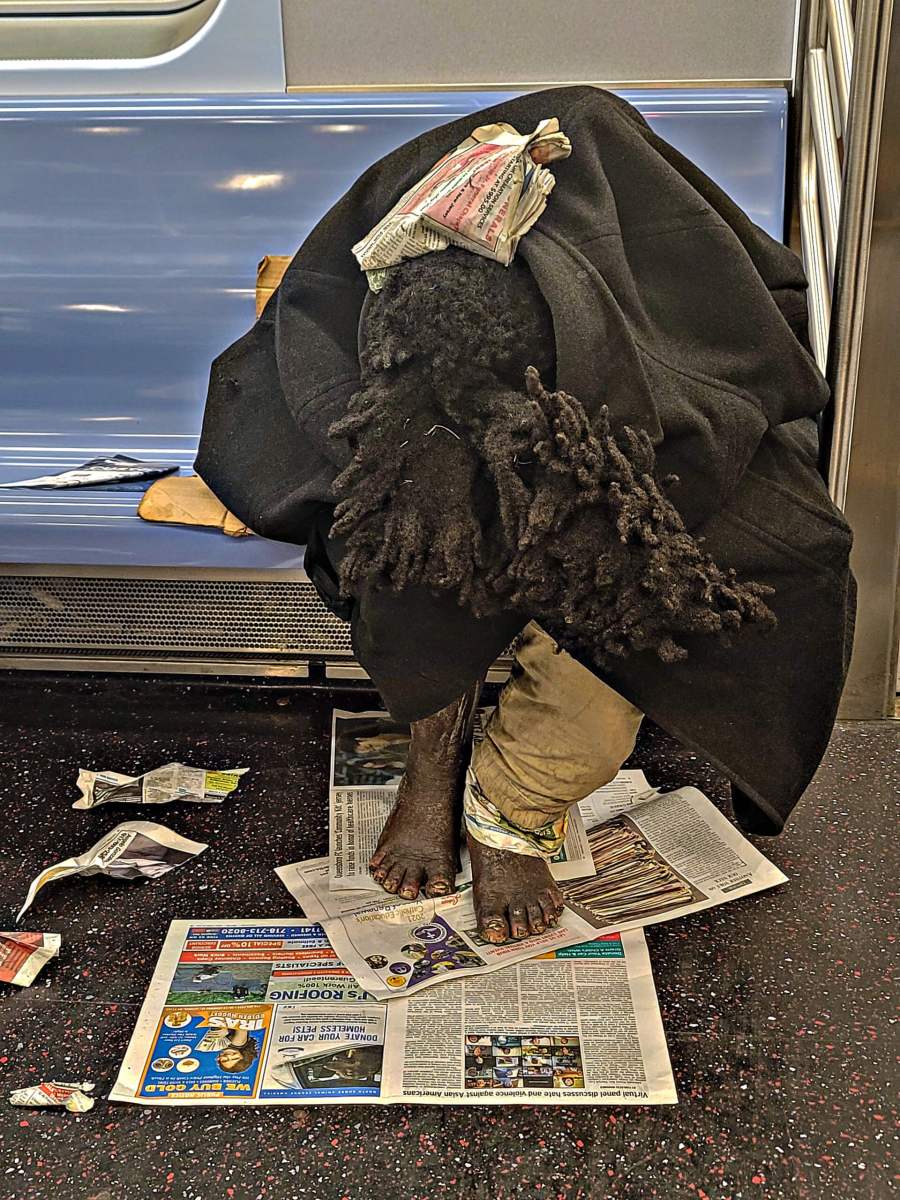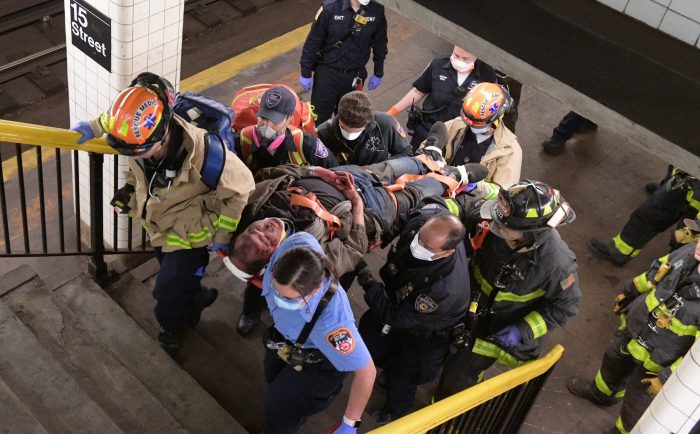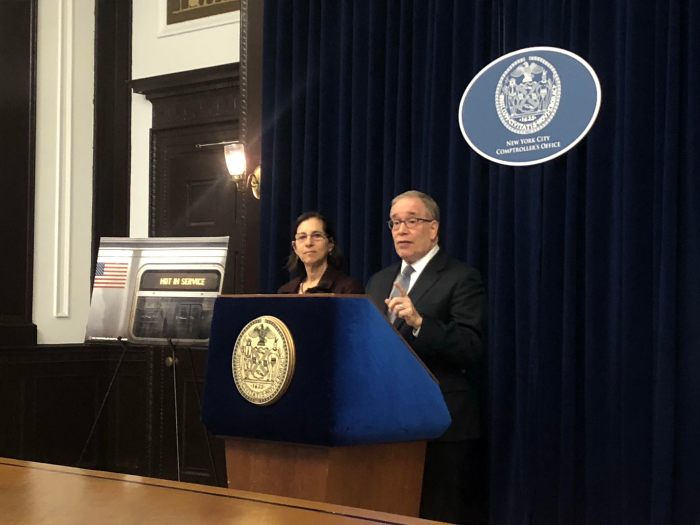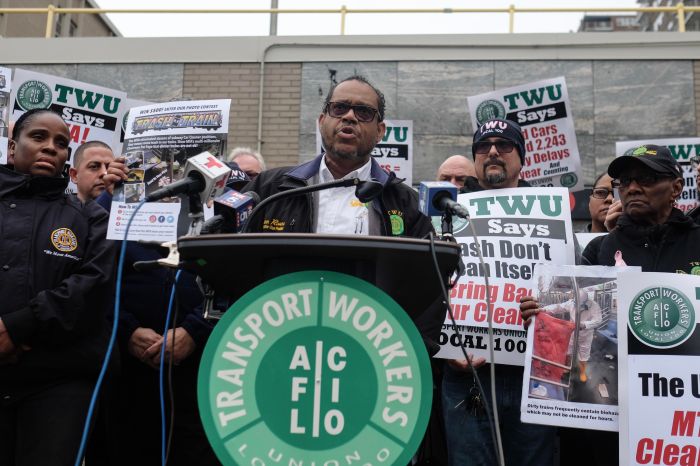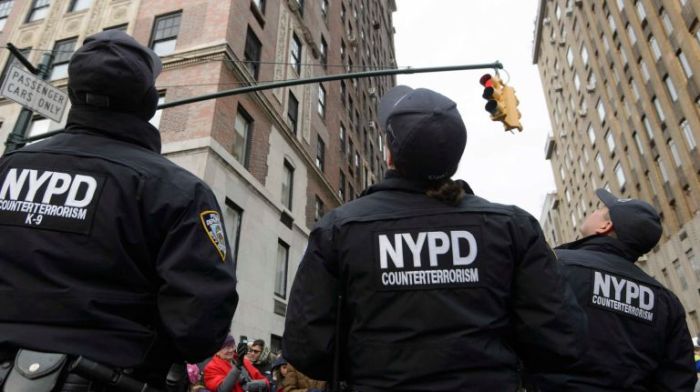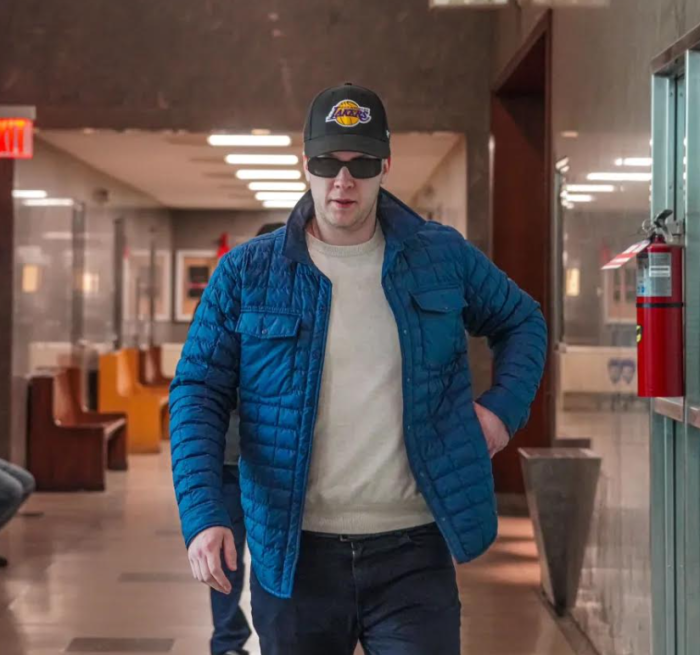Though the worst health crisis in a century seems to be abating in New York City, the homelessness crisis that predated COVID-19 continues to rage on in the city’s subway system.
As the Big Apple makes the vaccine readily available and many return underground for work and other outings, the fallout is apparent on both subway platforms and train cars.
Individuals doze in sleeping bags as hordes of shoes pass by while others tuck themselves into blankets and lay on benches. However, the scene inside the trains themselves can be even worse.
From inebriated, shoeless vagrants slumped over in a daze of unconsciousness with their feet resting on crumpled newspapers to men sitting in a pile of trash and strewn food as the carriage gently rocks its way to the next station, it’s clear the recent increase in human traffic has done nothing to impede the platforms, winding tunnels, and trains from becoming makeshift shelters.
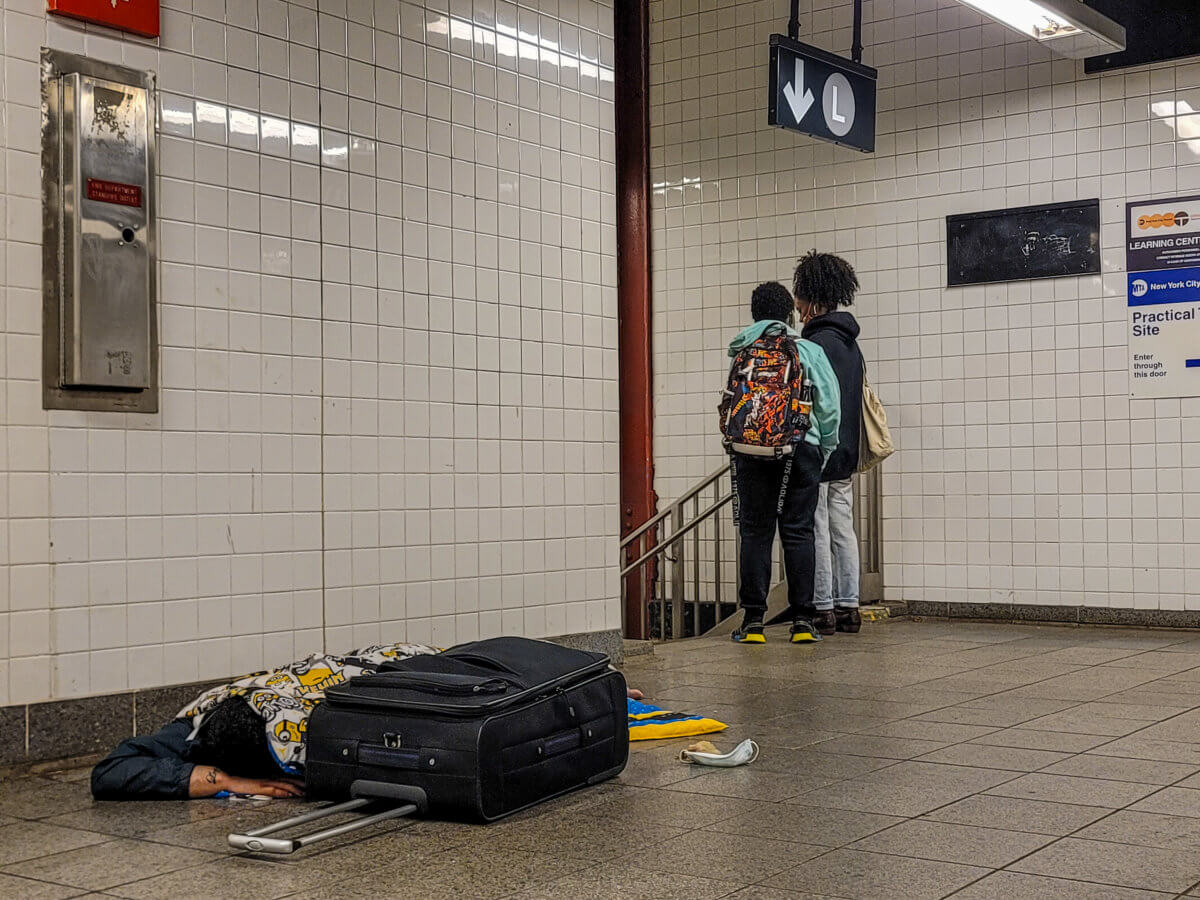
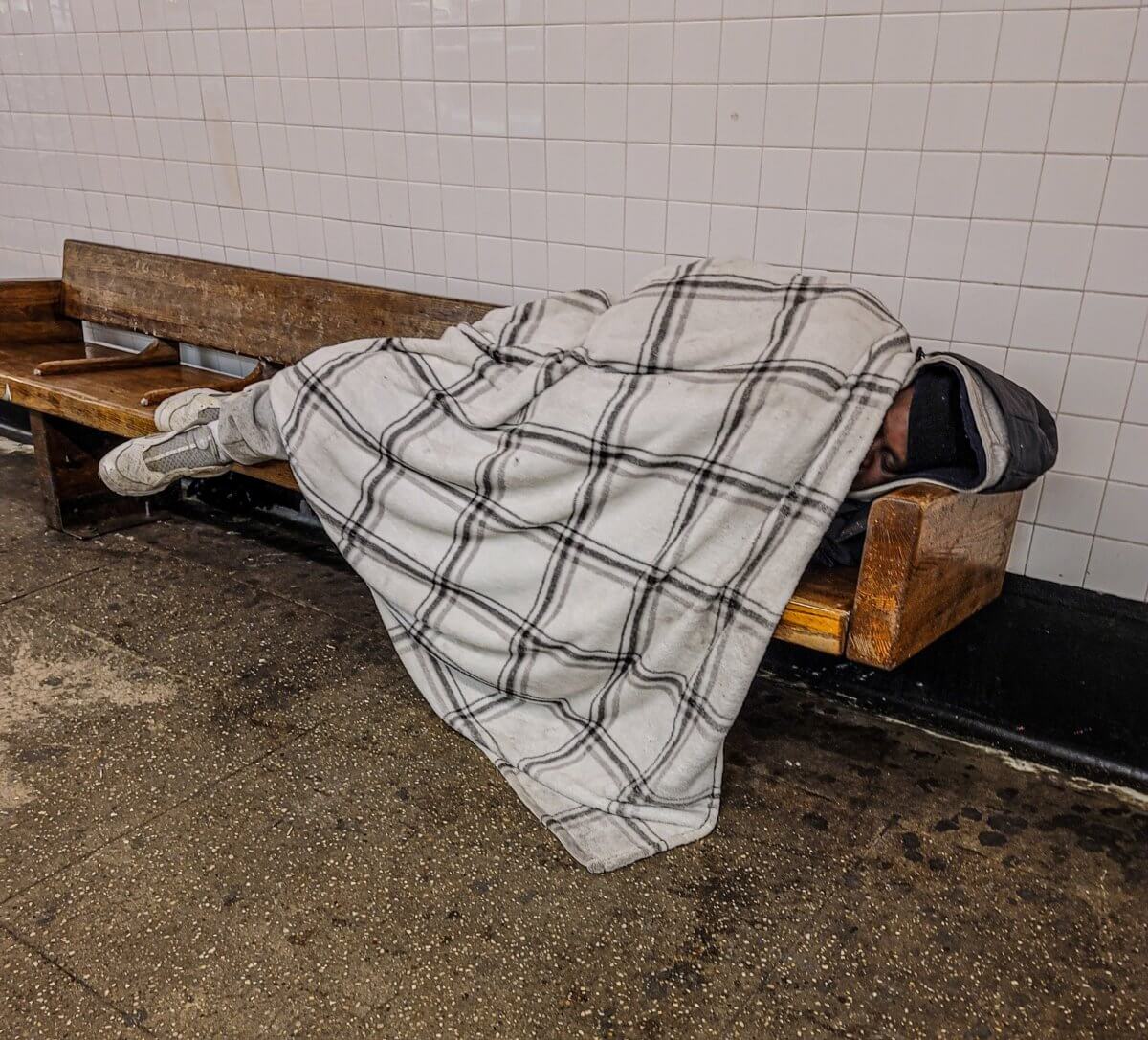
Sympathy and anger
To some New Yorkers this is just life in the big city; for others, it is an eyesore, and some riders feel it even poses a danger.
Beth Ellor is an English native hailing from London but has been living in New York City for over 50 years and says she uses the subway every day. While she believes many unhoused people have been removed, she says she must keep an eye out for her safety.
“I watch them because some of them can be erratic, but I mostly feel sorry for them because I think it’s a disgrace what they are going through,” Ellor said. She shared that she feels homeless individuals have had an even harder time since the pandemic.
However, now that the MTA is fully open and the city is trying to regain a semblance of normalcy, the sight of homeless individuals does not make Ellor feel unsafe — only sympathetic.
Gabrielle Gruaner disagrees, stating the situation makes her feel uncomfortable.
“The homelessness on the train is still very bad. It concerns me a lot, it’s bad. I think they are not taking care of them enough because they do not have spaces to go, and I think it is increasing. It doesn’t make me second guess going onto the subway, but it makes me want to watch out more,” Gruaner said. “I’ve had people going into my face on the subway, and it makes me nervous because COVID is still around. Most of the homeless are a little bit crazy and don’t wear masks.”
When the pandemic first hit New York City, 24/7 subway service was shut down for a deep cleaning. During that process homeless individuals were forced to forgo sleeping overnight on benches and train car seats.
City outreach still comes up short
The MTA say they worked together with the city’s Department of Social Services and the Department of Homeless Services (DSS-DHS) to identify key areas where services can be offered.
In order to help this transition process, DSS-DHS continued their ongoing efforts to engage these individuals meeting them at over 24 end-of-the-line stations, offering outreach services and even direct transportation for those who accept the help.
Today, DSS-DHS claim that this effort has helped 800 formerly unhoused individuals remain in a shelter.
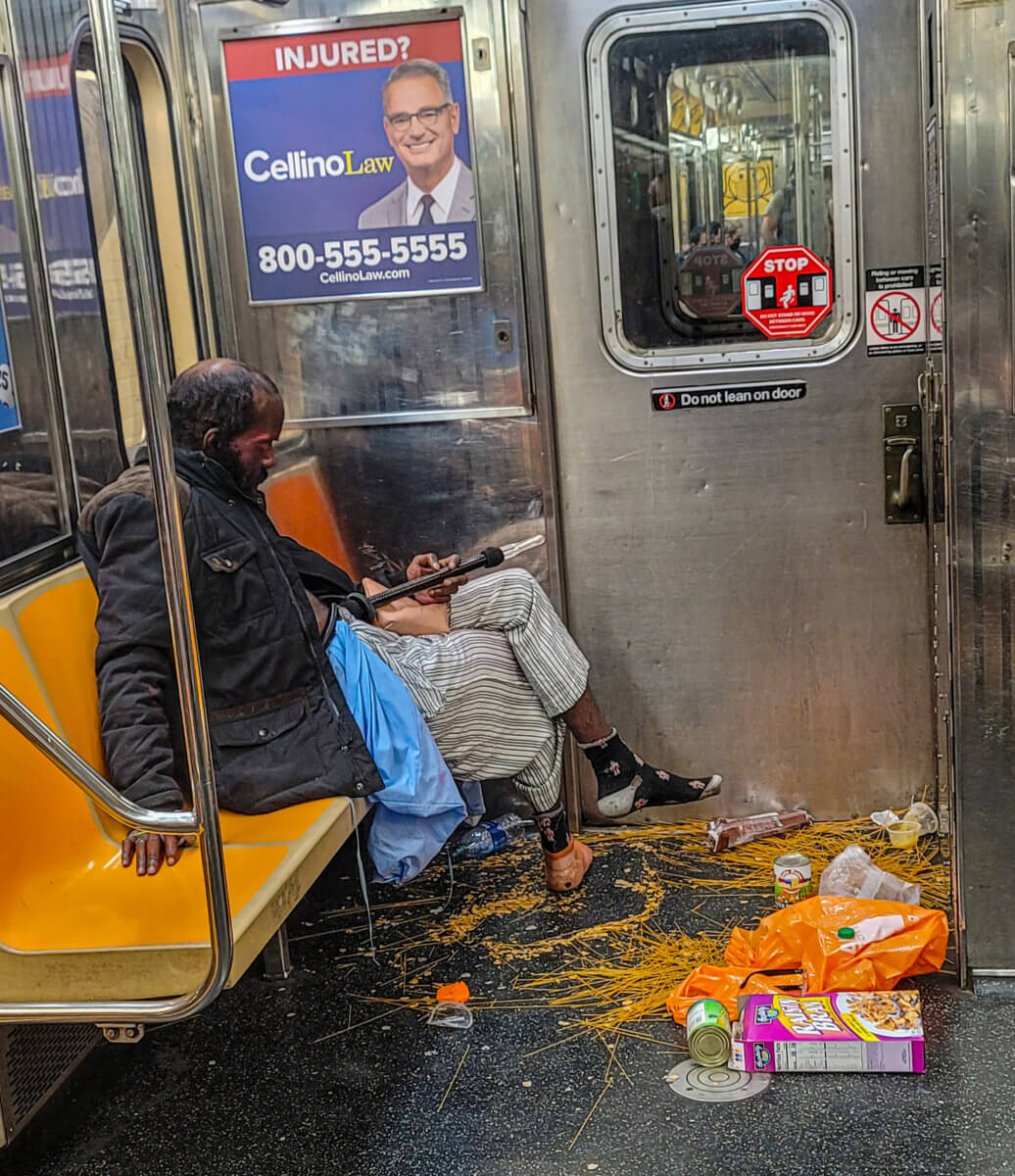
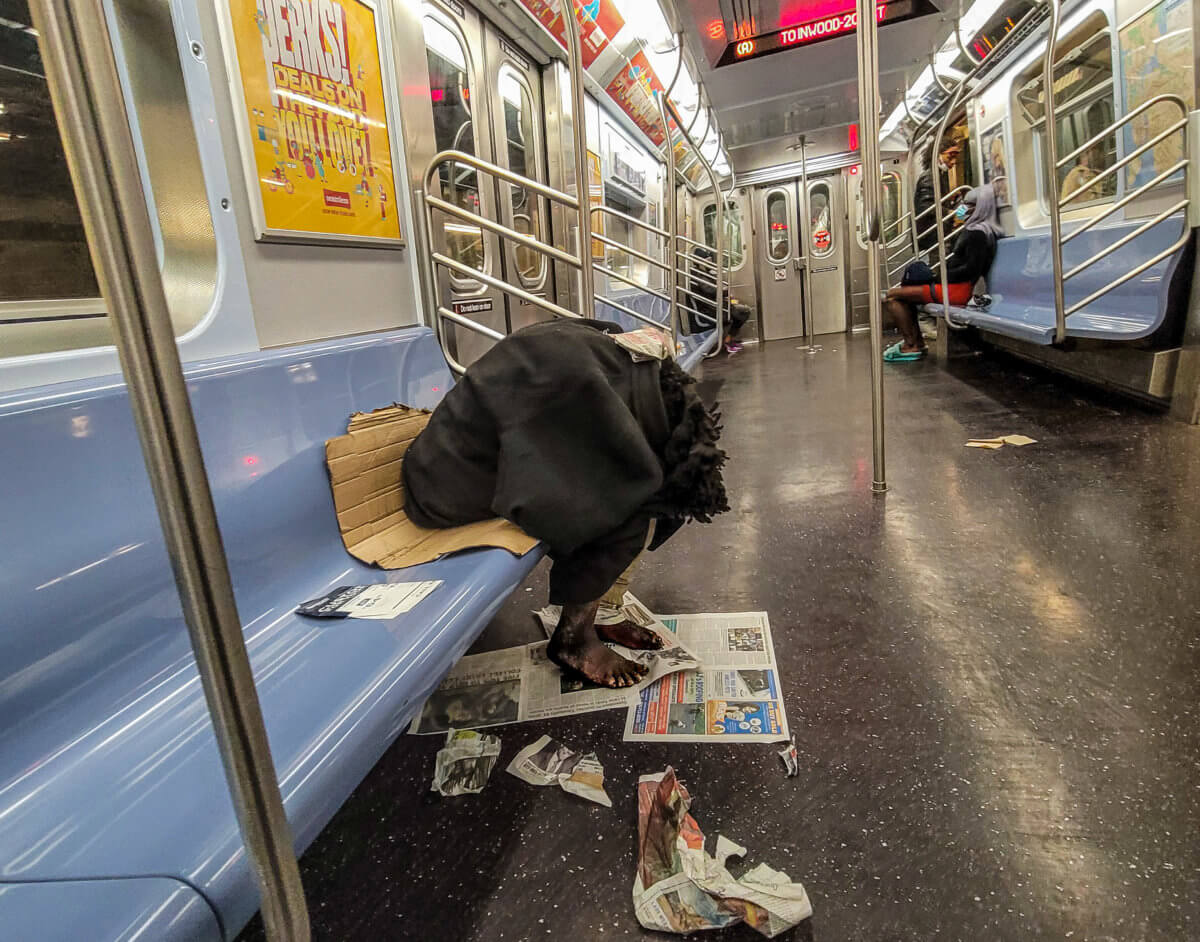
According to the January 2021 Homeless Outreach Population Estimate (HOPE) Survey, there have been 2,376 unsheltered homeless on the streets this past winter, representing a 38% decrease compared to last year just before the height of the pandemic.
However, with the housing crisis being in the worst state the city has seen for decades, leagues of vagabonds continue spend the majority of their time, sleeping, panhandling and mostly living underground.
City agencies affirm that they have been working tirelessly alongside the MTA to build on progress made throughout the pandemic, expediting placement for client who accept services, targeting resources prioritized for helping unsheltered individuals off the subways through Safe Haven and the stabilization of beds, and more.
Likewise, the MTA states that the authority has also installed more security cameras and technology to provide forensic capability pinpointing where problems are and how to deal with them in the future.
“What are we doing in addition to support the city in this regard? We continue to put more police and security forces out there to address the issues and it’s not so much about homelessness themselves but it’s about any bad behaviors or inappropriate actions, like relieving yourself in the train and issues of that regard,” MTA Chief of Safety and Security Patrick Warren told amNewYork Metro, stressing that homelessness is a responsibility of the city.
“This is a city responsibility. Homelessness is a societal issue that is a problem for the City, and we like everybody else in the city feel the consequences that the fact that homeless is out there and it comes into out spaces,” he said. “We continue to ask the city, it’s one of the big things that we do, to step up more and more with social services and with police that tend to help socials services in terms of trying to make sure that the people get moved to places where people can assist them. The city has stepped up in many ways with more social services and with more police. With that being said, there are still perceptions out there and they are real and until that corner is turned, we are going to continue to ask the city to do more.”
Security has also been ramped up due to the rise in subway violence such as anti-Asian attacks and several slashings, which has led the NYPD having a greater presence underground, making some passengers like Gruaner feel a little more at ease.
At the same time, she also feels that police presence should be concentrated within the trains and lower platforms rather than on the upper levels.
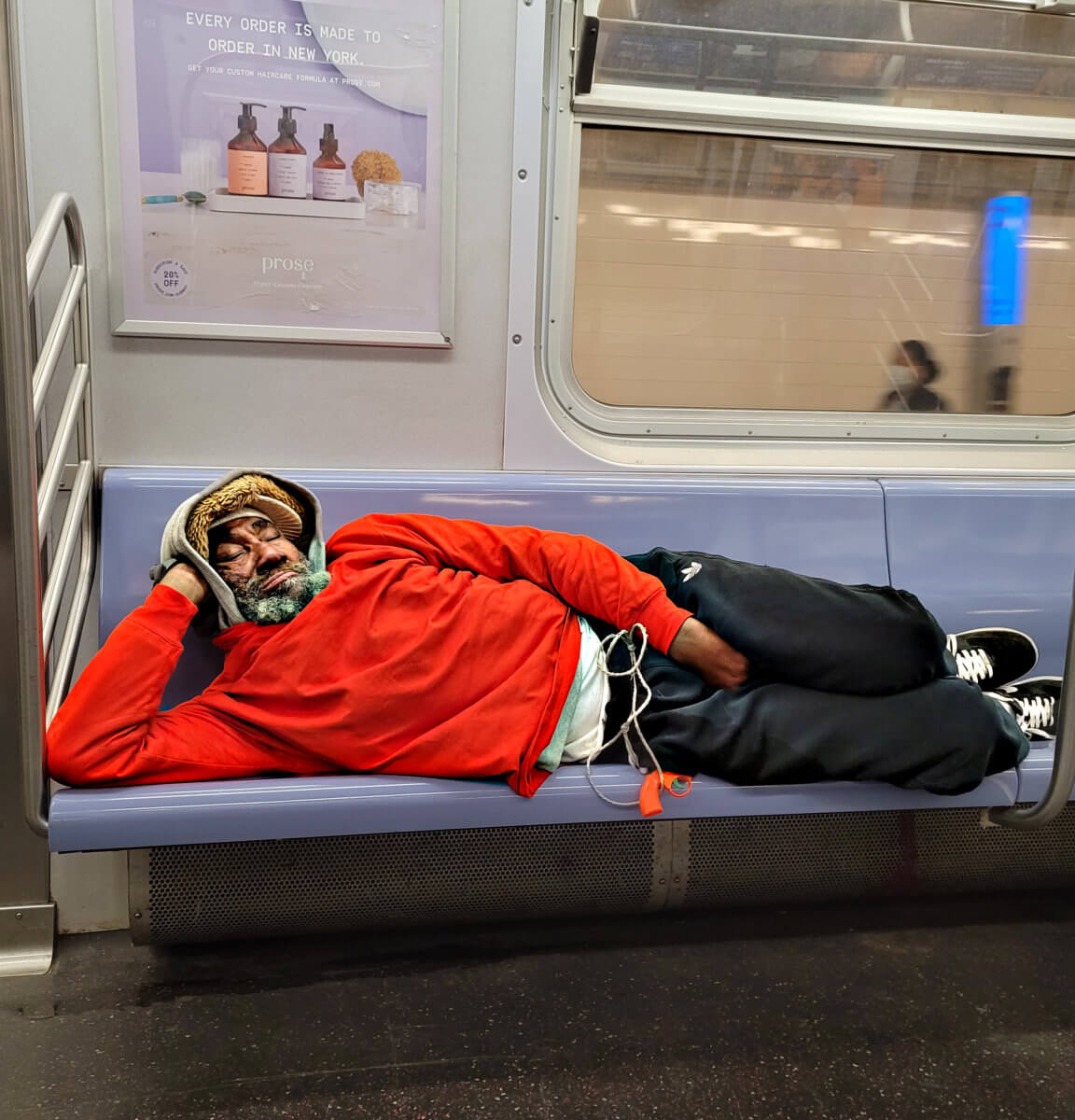
“I feel like the officers are always upstairs and they should be more in the subway level where there are a lot of the homeless,” Gruaner said.
Dr. Michael Doherty has noticed this about the NYPD too, although his concern is not centered on the same issue.
Dr. Doherty has been taking mass transportation throughout the pandemic and for this frontline worker, homelessness has always been an issue in New York City. However, he believes officers are doing little in terms of protections and instead simply spending their time watching for fare evaders.
“I don’t appreciate the place where they are, like they are trying to keep people from getting in the subway for free rather than being in the subway trains and being available for help. I don’t like that because it seems like more of their concern is making sure people aren’t getting on the subway for free rather than protecting people when they need to be protected,” Dr. Doherty said.
As gun and knife violence continues to surge throughout the city, the subway system joins the recent crime wave in becoming a black mark during the Big Apple’s recovery process in the eyes of many, but both the MTA and DSS-DHS say this is something they are committed to combatting.
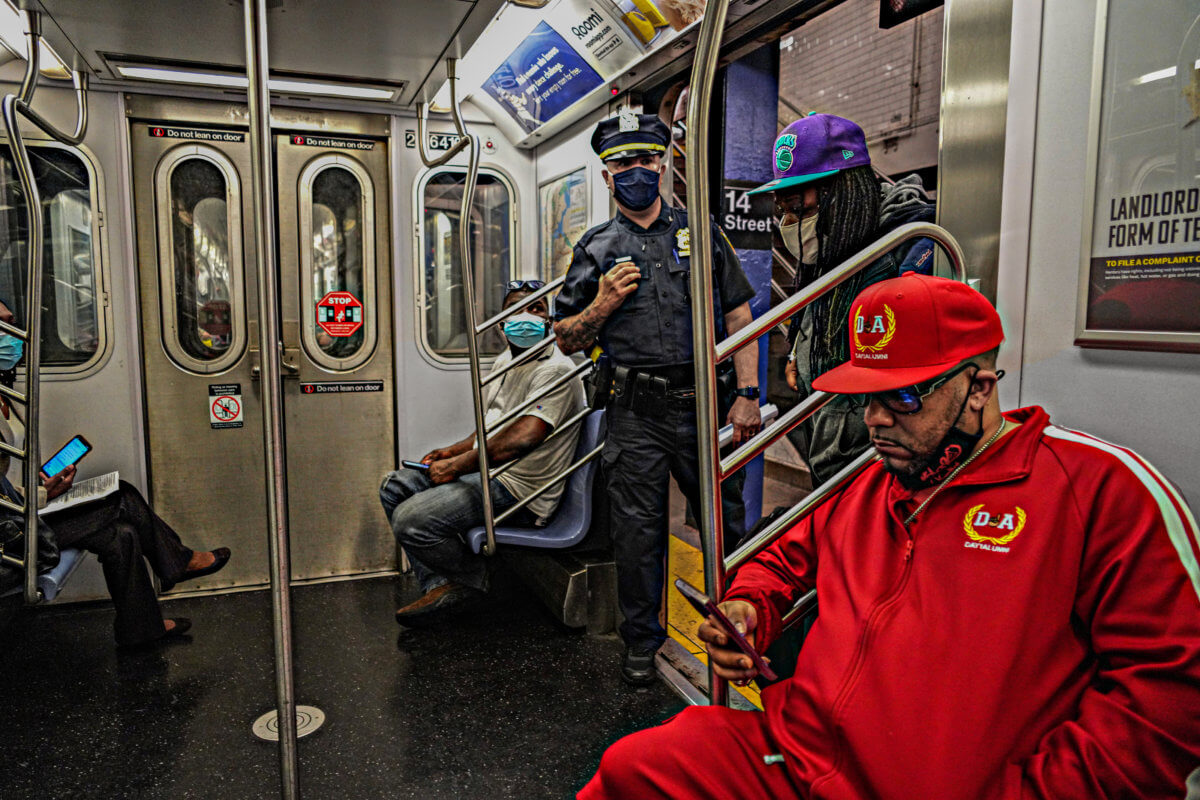
In accordance with NYS Mental Hygiene Law, a person cannot be forced to accept DSS-DHS services, in fact, unsheltered homeless New Yorkers can’t be involuntarily removed from the streets unless they are posing a danger to themselves or others.
DSS-DHS say they understand homeless individual’s distrust with government and continue to build relationships to grasp their specific situations and, by doing so, slowly build a rapport.
Yet this process is difficult as the city, MTA, and NYPD work in partnership together to make the subway system safer. With over 6,000 buses, 6,000 trains, it’s a massive undertaking on a moving target.

